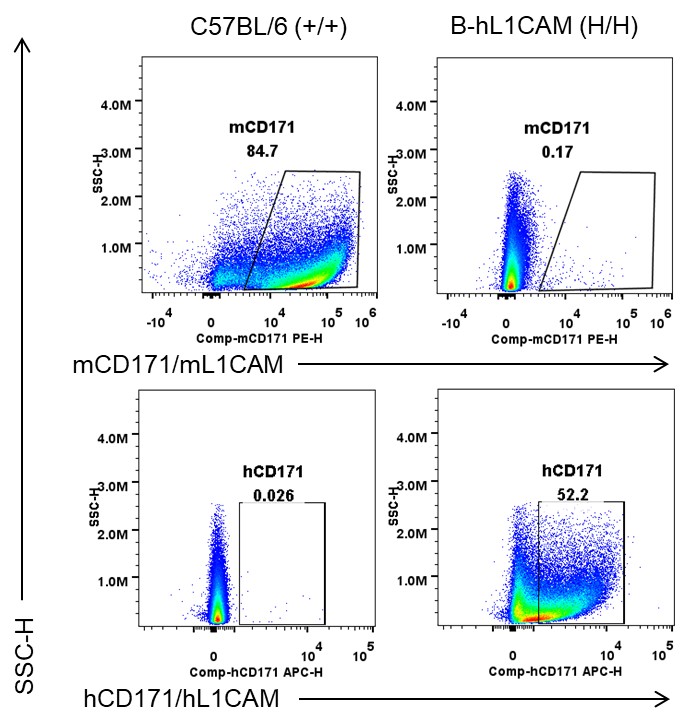


C57BL/6N-L1camtm1(L1CAM)Bcgen/Bcgen • 112808
| Product name | B-hL1CAM mice |
|---|---|
| Catalog number | 112808 |
| Strain name | C57BL/6N-L1camtm1(L1CAM)Bcgen/Bcgen |
| Strain background | C57BL/6N |
| Aliases | L1CAM, CAML1, CD171, HSAS, HSAS1, MASA, MIC5, N-CAM-L1, N-CAML1, NCAM-L1, S10, SPG1, L1 cell adhesion molecule |
Gene targeting strategy for B-hL1CAM mice. The exons 1-29 of mouse L1cam gene that encode the whole molecule (ATG to STOP codon), including 5’UTR and 3’UTR are replaced by human counterparts in B-hL1CAM mice. The human L1CAM expression is driven by endogenous human L1CAM promoter, while mouse L1cam gene transcription and translation will be disrupted.

Strain specific L1CAM expression analysis in homozygous B-hL1CAM mice by flow cytometry. Brain were collected from wild-type C57BL/6 mice (+/+) and homozygous B-hL1CAM mice (H/H), and analyzed by flow cytometry with species-specific anti-CD171/L1CAM antibody (R&D, FAB5674P; Invitrogen, 17-1719-41). mCD171/L1CAM was exclusively detectable in wild-type C57BL/6 mice, hCD171/L1CAM was exclusively detectable in homozygous B-hL1CAM mice.